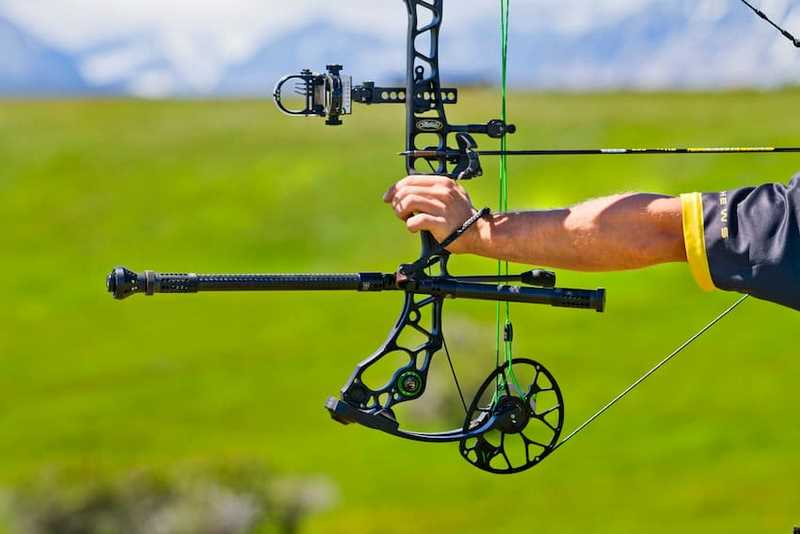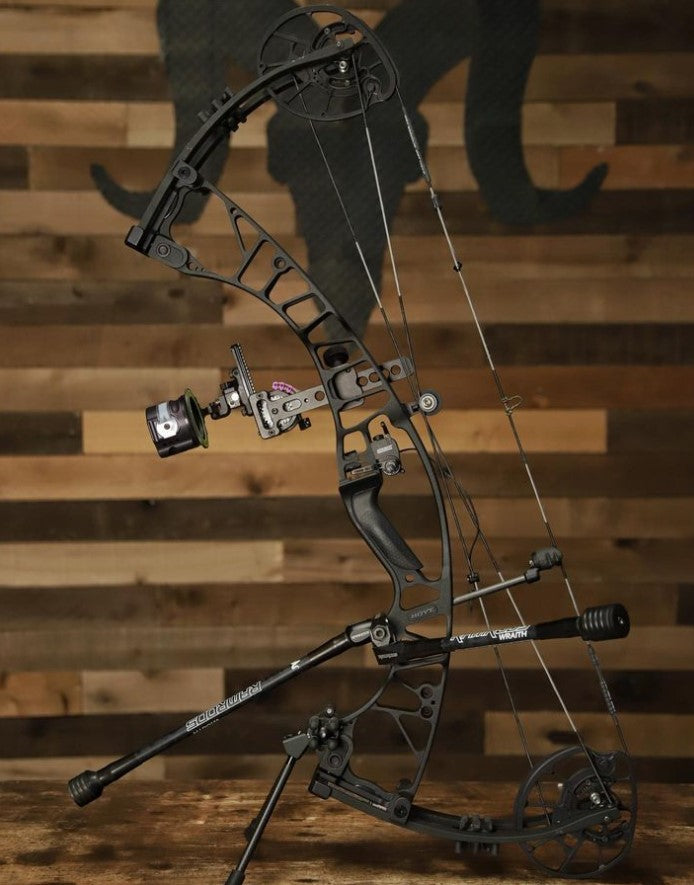Grasping Archery Stabilizers: A Complete Guide for Beginners
Grasping Archery Stabilizers: A Complete Guide for Beginners
Blog Article
The Ultimate Guide to Picking the Right Archery Stabilizer for Improved Precision
Archery is a sport that requires accuracy and accuracy, and selecting the appropriate devices is crucial for accomplishing optimum results. Among the various accessories readily available, an archery stabilizer plays a significant function in improving precision. With so many choices on the market, it can be frustrating to identify which stabilizer is the best fit for your requirements. In this thorough overview, we will discover the essential aspects to take into consideration when choosing an archery stabilizer for improved accuracy. From discovering the optimum size to understanding the various layouts and materials, we will certainly explore everything you need to understand to make an educated decision. So, whether you are an experienced archer wanting to upgrade your devices or a novice looking for support, join us on this journey as we unwind the secrets to selecting the ideal archery stabilizer.
Length: Finding the Optimum Stabilizer Length
When selecting an archery stabilizer for optimum performance,Identifying the excellent stabilizer size is critical. The length of a stabilizer straight impacts the balance, stability, and accuracy of the bow. A stabilizer that is also long can make the bow feel challenging and top-heavy to manage, while a stabilizer that is as well brief may not give enough security and dampening of vibrations. Finding the appropriate length calls for taking into consideration aspects such as the archer's shooting style, bow weight, and individual choice.
A longer stabilizer, commonly ranging from 8 to 12 inches, can supply better stability and minimize bow torque. This is specifically advantageous for archers who fire with a high draw weight or those that tend to torque the bow during the shot. The added size aids to distribute the weight uniformly and counterbalance any torque or activity.
On the other hand, a much shorter stabilizer, usually in between 4 to 7 inches, offers much more maneuverability and quicker response. It is preferred by archers who shoot with a reduced draw weight or those that call for even more mobility, such as seekers or 3D shooters. The much shorter length permits less complicated movement through tight rooms and faster changes.
Ultimately, the optimal stabilizer length refers personal preference and shooting design. It is advised to trying out various sizes and observe the results on security and precision. Consulting with seasoned archers or specialists can additionally offer beneficial understandings and referrals.
Weight: Identifying the Appropriate Stabilizer Weight
After taking into consideration the optimum stabilizer size, the following vital variable to think about when selecting an archery stabilizer is identifying the suitable stabilizer weight - archery stabilizer. The weight of the stabilizer plays a vital function in improving accuracy and stability throughout the shot
The weight of the stabilizer affects the equilibrium and control of the bow. A larger stabilizer can give boosted stability and control, particularly for shooters with a tendency for shaky hands or irregular shots. It aids to absorb the vibrations and recoil created by the bow, lowering torque and lessening the impact on the arrow's trip.
On the various other hand, a lighter stabilizer permits a quicker and extra receptive bow. It can be beneficial for shooters that prioritize maneuverability and rate over stability. Lighter stabilizers also lower tiredness throughout lengthy shooting sessions or competitions.
To identify the proper stabilizer weight for your needs, it is necessary to consider your capturing design, physical stamina, and bow configuration. Trying out different weights and observing the influence on your shooting efficiency is key to discovering the excellent balance.
Ultimately, the ideal stabilizer weight will certainly vary for each and every private archer. It is suggested to begin with a moderate weight and make changes based on individual preference and capturing outcomes. Keep in mind, the objective is to achieve a secure and controlled shot, while also keeping comfort and simplicity of usage.
Materials: Selecting the Right Products for Durability and Efficiency
When selecting an archery stabilizer, it is critical to very carefully consider the materials made use of in its building and construction to guarantee longevity and optimize performance. The option of products can significantly affect the overall quality and efficiency of the stabilizer.
Among one of the most commonly made use of materials for stabilizers is carbon fiber. Carbon fiber provides a high strength-to-weight proportion, making it light-weight yet unbelievably solid. This material decreases and takes in resonances bow torque, causing improved stability and precision. In addition, carbon fiber stabilizers are immune to temperature level changes and are less likely to warp or bend gradually.
Another preferred product for stabilizers is light weight aluminum. Light weight aluminum stabilizers also use a broad variety of personalization alternatives, allowing archers to adjust the visit site weight and length to match their preferences.
Some stabilizers are built using a combination of materials. A stabilizer may have a carbon fiber core wrapped in a light weight aluminum shell. This hybrid design combines the most effective top qualities of both materials, offering optimum stability, longevity, and performance.
Design: Comprehending the Different Stabilizer Layouts and Their Impacts
Taking into consideration the materials made use of in archery stabilizers, it is essential to currently delve right into the various styles of stabilizers and their particular effects. The layout of an archery stabilizer plays a vital role in boosting precision and minimizing resonance during the shot. There are numerous different styles available on the market, each with its very own special qualities.

Another prominent design is the side bar stabilizer. This layout includes connecting a short pole to the side of the bow, alongside the main lengthy rod. Side bar stabilizers help in counteracting the weight of accessories, such as quivers or views, and give extra stability to the bow.
Some stabilizers feature adjustable weights. These stabilizers allow archers to make improvements the balance and feeling of their bows by including or getting rid of weights. This feature is particularly valuable for archers who prefer a specific weight circulation or wish to experiment with different arrangements.
Additionally, some stabilizers incorporate wetting innovation to decrease vibration and sound. These stabilizers typically have built-in dampeners or utilize products that take in resonances, resulting in a smoother and quieter shot.

Devices: Exploring Extra Devices for Boosted Security
These devices are made to function in combination with the archery stabilizer to give an also higher level of stability and accuracy. One such accessory is the V-bar or the side stabilizer mount.
Another device that can improve stability is a bow sling. A bow sling is a strap that affixes to the bow and enables the archer to keep an unwinded grip on the bow handle without the fear of dropping it (archery stabilizer). This relaxed grip aids to minimize muscle mass tension and allows for an extra secure and regular shot
Furthermore, a stabilizer weight system can be utilized to tweak the balance and security of the bow. These weight systems typically contain little weights that can be added or removed see from the stabilizer to readjust the balance point of the bow. By locating the ideal balance factor, archers can achieve a more secure he said and precise shot.
Final Thought
To conclude, picking the best archery stabilizer involves considering variables such as size, weight, materials, style, and additional accessories. The optimum stabilizer length and weight will certainly rely on private preferences and shooting design. Picking resilient materials is vital for long-lasting efficiency. Understanding the different stabilizer layouts will assist enhance accuracy. Last but not least, checking out added accessories can even more boost stability during archery capturing.
Figuring out the excellent stabilizer length is important when picking an archery stabilizer for optimum performance. A stabilizer that is as well long can make the bow really feel difficult and top-heavy to manage, while a stabilizer that is also brief may not supply adequate stability and dampening of vibrations - archery stabilizer.Taking into account the products made use of in archery stabilizers, it is important to now delve into the different designs of stabilizers and their respective results. Side bar stabilizers help in counterbalancing the weight of accessories, such as quivers or sights, and provide additional stability to the bow
These weight systems usually consist of little weights that can be added or eliminated from the stabilizer to change the balance point of the bow.
Report this page